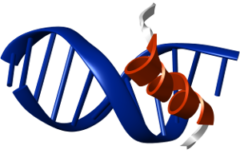13th Structural Biology Club of the Czech Society for Structural Biology
online on
25 January 2023, 13:00
with the following scientific talks kindly delivered by our guests:
Fragment-Screening by Crystallography at the Helmholtz-Zentrum Berlin – workflow, tools and procedures
Presented by Manfred S. Weiss, Macromolecular Crystallography Helmholtz-Zentrum Berlin
Fragment screening is a technique that helps to identify promising starting points for ligand design. Given that suitable crystals of the protein of interest are available and exhibit reproducibly good X-ray diffraction properties, X-ray crystallography is nowadays the preferred method for fragment screening, because – in addition to a simple yes/no answer with respect to binding – it provides detailed 3D information of the binding mode. In the presentation, the complete practical workflow and the included tools on how to conduct a crystallographic fragment screening campaign at the BESSY II synchrotron radiation facility at the Helmholtz-Zentrum Berlin (HZB) are presented. This includes the use of a suitable library, the use of special tools for the handling of many crystals with ease and reliably, automated facilities for diffraction data collection and processing as well as automated structure refinement and ligand identification. Also, glimpses will be provided in how to evolve the initial fragment hits into more tightly binding compounds.
Structure and activity of botulinum neurotoxin X
Presented by Jana Škerlová, Institute of Organic Chemistry and Biochemistry, Czech Academy of Sciences, Prague
Botulinum neurotoxins (BoNTs) are the most potent toxins known, causing flaccid paralysis by targeting motor neurons, and are used to treat an increasing number of medical disorders. BoNT/X is a recently discovered new botulinum neurotoxin serotype with unique and therapeutically attractive properties.
The presentation focuses mostly on the cryoEM structure of the BoNT/X, determined in complex with the non-toxic partner protein (NTNH/X), which protects the toxin from the low pH and proteases in the digestive tract of the host. In addition, the atypical pH stability and protease resistance profile of the BoNT/X-NTNH/X complex together with the unusually low in vitro and in vivo potency of the toxin will be presented and discussed, suggesting a non-mammalian target organism.
Moderator: Pavlína Řezáčová, IOCB Prague
Please, join us on this Zoom link (join 5-10 minutes before the beginning)
https://cesnet.zoom.us/j/98867419047?pwd=WEF6THZuU01YQVpmMmxsV1hFaWZjQT09
Meeting ID: 988 6741 9047
Passcode: 726237
